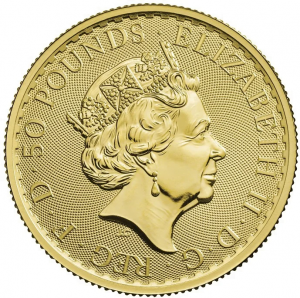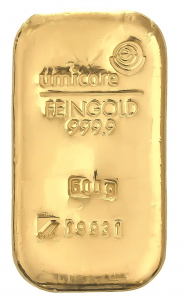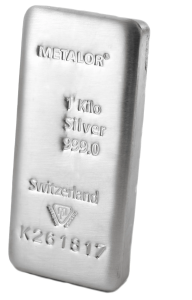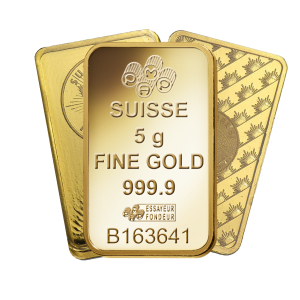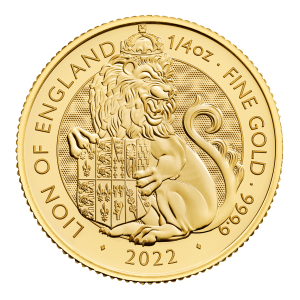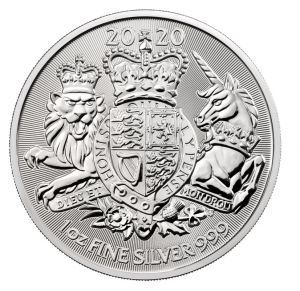Falling Gold Price
With the French Presidential election imminent, political turmoil in the East, and a suggestion that the Federal Reserve is likely to increase interest rates, we are seeing an erratic slide, and drastically pessimistic view, on the price of gold over recent weeks.
The speculation of rises in rates alone, tend to have a negative effect on the price of gold, but the combination of the above factors have caused the metal’s price to drop so dramatically in the past two weeks, that many investors are questioning why this is. As a rule of thumb, economic instability and political turmoil has an inverse effect on the price of gold, as we usually see an increase in demand, and therefore an increase in the price. However, as Investing.com report; “that is not happening and Gold is having a rough day in the market today”.
With Gold prices currently trading at around £955 per ounce, compared to the mid-April price of £1033 (a decrease of approximately 7%), the question is whether the prices will rebound soon and is your physical gold investment safe?
To understand just what is happening and the possible longer-term effect on the gold price, we have to consider a number of geopolitical factors, including the French & UK elections.
Wondering how best to protect yourself with gold? Download the FREE Ultimate insiders guide now
The French Election
Looking at the price of gold, there was a sharp overnight drop following the first round of the elections,
and a continuing decline since. The French Election first round results, and the potential outcome on May 7th, will certainly be having an impact on the metal’s pricing, but we must bear in mind that the price started to slide, prior to the results of the first round.
Opposing one another in the Elections, are Independent Emmanuel Macron and Front National leader Marine Le Pen. Both have withstood first-round elections and have created quite a bit of controversy among the French. This dissent is spilling out into the streets in the form of protests for and against both sides.
Early polls indicated Emmanuel Macron would comfortably beat Marine Le Pen, in the second round, but many are sceptical and have not forgotten the unexpected Brexit result in 2016 – meaning that nothing can be taken for granted. Some are saying that if Le Pen wins, then the EU would be facing its largest disaster to date, even overshadowing Brexit. This uncertainty, combined with many other pertinent political issues that are important to the future of the country, are affecting the economic outlook and contributing to the instability that is being encountered.
A year of Global political Change
As with any election year, geopolitical tensions can run high and have a significant effect on precious metals. 2016/17 will undoubtedly go down in history as the year Global politics fundamentally changed. With a growing anti-establishment sentiment, The FT.com has referred to it as a “year of political earthquakes”. Later in 2017 (September – October), Angela Merkel will be looking for a fourth term in office. However, she faces a huge electoral challenge as the anti-immigrant, anti-euro ‘Alternative for Germany’ aim to take advantage of her liberal views on immigration and her in-party problems. What, with Brexit, Trump and more recently, a call by Theresa May for a snap General Election in the UK in June; 2017 and beyond is certainly looking like it could continue to be a very difficult period in politics. Certainly, the past year has proven that any assumption of political outcome, is quite dangerous.
US Economics and the price of gold
Politics isn’t the only factor influencing the prices of physical gold. Economics, naturally, have a massive impact and can cause gold prices to rise or fall sharply, in a matter of minutes. Policy statements by the US Fed and the monthly jobs reports are major catalysts for growth or catastrophic blows.
The latest US Employment report is due out on Friday 5th May and many experts are predicting a robust recovery in the jobs market, meaning unemployment rates in the US are dropping. However, an increase in US labour figures, equals higher inflation rates, subsequently suggesting the Fed are likely to introduce higher interest rates in June. Analysts are predicting that this is very likely to happen. In fact, the probability of this was recently upgraded from 67% to 97%, with the Fed confirming that they remain confident in the US economy.
So, how does this usually affect the gold price? Gold is inversely correlated to the interest rate trends because higher interest rates mean people and businesses are hit with higher costs, causing earnings to fall and people having less disposable income. From a business perspective, this can negatively affect the growth of a company and results in falling stock prices. Usually, declines in equities mean the price of gold increases, however, what we’re seeing at the moment, is a combination of factors, creating an unusual pattern.
Equity Market Bubble (but is it about to burst?)
Incredibly, the markets have been rising for a number of months now, with some European Equity Markets at record highs. This is causing some concern amongst the experts, with the belief that the markets are in dangerously high territory. So much so that many are warning of a stock market ‘bubble’, which could catastrophically burst at any time.
And although not quite agreeing with the term “bubble” even the experts at Seekingalpha.com certainly agree that stocks are currently overvalued.
A strengthening pound
The pound has gone from strength to strength since Theresa May signalled her desire for a 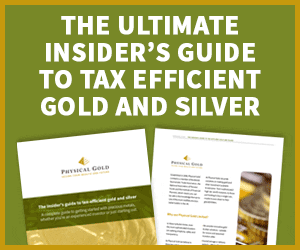
What can we expect of gold in the coming months?
One major factor in June, that will determine the gold price, will be the Fed’s decision on interest rates. If the rates rise, as predicted, this will undoubtedly impact the current stock market ‘bubble’ and indeed may be the catalyst for gold’s recovery – especially if the dollar also rallies.
Buy Gold whilst prices are low
Daniel Fisher at Physical Gold says “For many investment professionals, Gold is the investment of choice during geopolitical and economic turmoil and savvy investors take advantage of these lower prices, buying gold in bulk to add balance and diversification to their portfolios”. If, as an investor, you’re thinking of starting your own gold nest egg, then you should take advantage of today’s prices and simply ensure you buy at the best price you can find.
What drives the price of gold? While many people think that the jewellery industry is in charge of how gold is priced and why the value of gold increases or decreases depending on the time of year, there are actually many factors attributed to this. With gold being highly sought after by the jewellery, medical and technology industries, where does that leave investors? Do gold investors have a part in the price of gold? What factors really drive the price of this precious metal? Let’s take a closer look at the many factors driving the price of gold in today’s markets.
Central Bank Reserves
Many of the world’s nations have reserves that are composed primarily of gold and their central banks hold paper currencies and gold in reserve. When these central banks begin buying more gold than they are selling, the price of gold rises.
Learn all about gold investment, with the Ultimate Insider’s Guide to gold. Download FREE
Value of the U.S. Dollar
The price of gold is inversely related to the value of the U.S. dollar. When the dollar is strong, the price of gold decreases, and when the dollar is weak, the price of gold increases. The reason for this is that people invest and trade in dollars when the dollar is strong, and when the dollar is weak, they prefer to invest in gold either through gold funds or physical gold.
Jewellery and Industrial Demand
The price of gold is affected by the basic theory of supply and demand. When the demand for consumer

Wealth Protection
When an economy goes into a recession, people turn to gold investments due to its lasting value. Gold is often used as a hedge against currency devaluation, inflation or deflation and its price will increase when the expected or actual returns on bonds, equities and real estate fall.
Gold Production
The top gold producing countries in the world are China, South Africa, the United States, Australia, the Russian Federation and Peru. Gold production affects the price of gold and with gold mine production increasing by about three percent annually, gold prices should remain stable for quite some time. Another factor that arises from the mining of gold is that all of the “easy gold” is already mined and now gold mining companies must take extra precautions when mining the precious metal. These extra steps cost more money and this increase in the cost of gold mine production results in rising gold prices.
If the thought of a dependable investment that offers stability and an excellent return on your investment appeals to you, contact Physical Gold today and let one of our investment professionals assist you and answer any questions you might have about investing in physical gold.
Gold Price in 2015
It’s a universal truth that, whichever way you look at the figures, 2015 wasn’t a good year for the price of gold, but that leads us to two important points…
- A year is still a very short period of time when it comes to framing investment performance and it’s worth noting that gold’s ten year performance still averages 11% annual returns, despite the gold price in 2015 dipping. As Warren Buffet once said, ‘our favourite holding period is forever’.
- In addition to this, the falls of 2015 created an excellent buying opportunity. As gold was well off its peak, those yet to enter the market were presented with an ideal opportunity to do so.
Gold in 2014 ended at $1,183.90 (per ounce) and closed out 2015 at $1,060.30. In Sterling terms, this represents a more modest gold price fall of around 6.5% during the year.
This fall in the gold price was driven by a number of factors throughout the year, but the single most influential one was that investors were waiting to see what the US Federal Reserve was going to do with interest rates. With gold often priced in US$, any minor change in the US currency is analysed closely and there is little doubt that the mooted rate rise throughout 2015 – and eventual decision to raise in December – had a large impact.
What does this mean for you in 2016?
Related – 5 Steps to gold investment
This again means two things for investors:
- When the rate settled, gold began to rise almost immediately in 2016, with particularly strong price rises in February. The world economy also continues to encounter challenges, which historically suggests further strong performances for the price of gold. For those wishing to sell some or all of their holding at this point, this is obviously encouraging. Gold has hardly been below $1,200 since the start of February, representing potentially good profit – depending on when a purchase was made. These sharp rises are great news for investors wishing to release their capital and lock in profits.
- Even with these recent price rises being good news, the longer term – with a climate of economic uncertainty, potential ‘Brexit’ in the UK and an open Presidential race in the US – bodes well for gold. It’s still 30%+ off its peak in 2012, which suggests there is plenty of room for growth, especially in a climate likely to encourage upward price movement. Therefore gold still presents a fantastic buying opportunity for new investors, or those wishing to supplement current holdings.
With gold price in 2015 behind us and a hugely positive start to 2016, it currently appears that next year’s price analysis could be a much more positive review.

Gold Price Rise
There has been great news for holders of gold in early trading this year, with the gold price rise of over 15% since the start of the year. February has proven to be a bumper month for investors, with gold finishing strongly to post the highest gains across a single month for over four years, at a little over 10%. To put this into perspective: gold has been amongst the strongest asset classes in 2016, outperforming oil, emerging markets, the S&P 500, the US dollar and the bond market.
One American analyst has even gone as far as to say that buying gold today may be comparable to ‘buying stocks in April 2009.’ The same analyst, predicting further positive future returns for gold, noted that between April 2009 and November 2015, the S&P 500 Index charted a 145% rise.
 Protection
Protection
Whatever the future holds, the gold price rise to $1,230 per ounce by the end of February (up from $1,050 shortly before Christmas) has shown once again that it’s the ‘go to’ option for the protection of wealth. Gold has historically risen during periods of economic uncertainty and, so far this year, it is showing that it still possesses those desirable qualities for investors. With concerns around China, the wider world economy and Britain’s potential exit from the EU, it’s little surprise that gold has created both potential buying and selling opportunities for those who do and do not currently hold the metal as part of their portfolio.
In fact, gold holders are benefitting in two distinct ways from the discussion of Britain’s potential ‘Brexit’. With business leaders and markets worried about the impact on the economy, should Britain turn its back on the EU, it’s fair to say that gold’s price has been buoyed. Whilst this has been happening, however, sterling has also fallen against the dollar, further boosting the sterling price of gold for UK investors. In Sterling terms, gold has risen a massive 22% this year, with 14% of that coming in February alone.
On a day to day level, we’ve seen a huge spike in enquiries with investors moving quicker to complete a purchase than at any time since 2008. In contrast, there have been few sellers, with most wishing to hold their position with more price rises predicted on the horizon.
With so much demand, supply of the right type of gold is starting to become squeezed – another sign that prices will continue to rise and possibly also increase premiums in the near future.
These factors, combined with the prevailing economic winds and the ongoing political climate, look likely to mean one thing: it’s going to be a very interesting year for those of us who hold gold!
One of the most significant headlines in financial markets over recent months has been the dramatic fall in the oil price to $50 a barrel. But is there a direct relationship with gold and will a sustained low oil price drag down the price of precious metals?
Share prices tumble
With the FTSE 100 index heavily weighted towards oil, the continued fall in oil prices has pulled the index lower in value too. It’s been a hugely volatile period for equities but not all of this turbulence can be solely credited to plummeting crude prices. European stocks have dropped dramatically due to concerns that Greece’s upcoming election will lead to the Hellenic Republic leaving the Euro and its austerity promises behind. The consequence would be considerable debt write-offs for many institutions and investors and reported Quantitative Easing by the EU in an attempt to prop up the floundering region. Similarly, the recent terror strikes in France, with additional threats globally has put further pressure on the stability of equity markets.
Clearly the gold price has benefited from these falls. As the traditional safe haven investment, many investors have switched into gold to protect against the volatility. However, oil can’t be granted full responsibility for the equity turbulence as markets still struggle with the fallout from the ongoing global financial crisis.
Falling oil price has led to lower petrol prices
Petrol prices have fallen from £1.27 / litre in November to around £1 / litre now. In theory, this should put more money into consumers’ pockets – driving up the economy and gold down. However, the fall in the pump price doesn’t get close to reflecting the fall in the oil price as so much of the petrol price consists of tax. This effect has diluted oil’s impact. With other factors still holding the economy back like low wage increases, lower petrol prices alone aren’t enough to spark an economic surge.
Cheaper production costs
With the oil price tumbling, it isn’t only consumers who could benefit from lower fuel prices, but corporations too. Anything which requires transport could see costs fall while the oil price remains low. It’s just doubtful that companies will choose to pass any savings onto consumers. Gold mines have struggled over the past 18 months with gold’s price falling below the cost of production. With oil making up a substantial element of their fixed costs, many may perceive the low crude price as the saviour they needed. Lower oil prices could well end up keeping some mines in business who may otherwise have shut down – maintaining gold’s supply source. However, with such lean times recently for the gold miners, it is unlikely that low fuel costs will be passed on as lower gold prices as they seek to make up lost revenue during the recent mine squeeze.
Gold up 5% this year
Despite oil’s fall, and prediction to continue falling towards $40 a barrel, gold has started the year robustly. While it’s risen strongly in Dollar terms by 5%, its performance in Sterling is even better at 7%. Not bad in a fortnight. This demonstrates that while oil has some degree of impact on the gold price, it is impossible to draw a direct correlation. There are simply too many other factors at work.
Indeed, some of those who may suffer the most by the falling oil prices are the Russians and some Middle Eastern producers. These are the very same investors who have provided the impetus for the UK economy by focusing much of their investment in the UK. Take away the momentum from these guys, and the UK economy may yet be pulled back, sparking another rush towards gold. So while the Ukraine invasion may not have made an immediate impact on your gold investment, it may well be doing now.
After treading water for most of the first half of the year, gold price prospects may finally be improving
After last years dramatic fall in the gold price, precious metals enthusiasts were hoping for an immediate bounce upwards which never came.
However over the past few weeks the price has crept steadily higher and gold price prospects over the second half of 2014.
Golds perfect storm comprises of three elements:
1.Continued economic weakness
Recent disappointing US job numbers, a shrinking German economy and frozen wage growth in the UK have provided a catalyst for gold. With a rise in UK interest rates now postponed until next year, Sterling weakness is pushing the gold price up for UK investors as its base price is in US Dollars.
This provides a double whammy for British gold buyers: The underlying price rising with safe haven demand, combined with further gains in Sterling terms due to a weakening domestic currency.
2.Middle East unrest
Political instability leads to a flight to safety, directly benefiting the gold price. With growing unrest in Iraq and Israel/Palestine, the cost of military involvement will fuel the safe haven appeal and increase the US deficit. Just as importantly, economic sanctions against Russia for the crisis in Ukraine could yet impact global growth, especially as Russia retaliate by pulling funds from the UK and US.
3.Sub-continent push
Finally, autumn tends to bring the usual seasonal push for gold in response to the huge spike in demand from India in time for its wedding season. There’s no guarantee that this will push gold higher in Q3 but it does seem to 9 years out of 10.
Batten down the hatches
With all three elements working together, we should finally see sustained growth in the gold price, especially in Sterling terms. So strap yourself in and don’t be tempted to sell if there’s volatility along the way.
Recent gold price fall
The 14% gold price fall over the last few days has stunned the market into a panicked selling frenzy! Gold wasn’t alone in its descent and in fact all commodities have lost considerable value. With less people trusting the banks after what happened in Cyprus and now Portugal people are now starting to ask what shall I do?
The answer is straightforward but before we go down that road I want to make it clear how we got here:
It wasn’t long ago that the vast majority of market participants
and analysts were predicting $2,500 an ounce for gold some even by the end of next year. These predictions were made in the face of weakening global economic circumstances. Europe is technically bankrupt and cant afford to repay monies borrowed. Cyprus has just set a dangerous precedent of helping themselves to peoples bank accounts in order to raise money. People are of the opinion that this could happen in Portugal and wider Europe and consequentially people are being turned off using banks. Confidence has dragged European stocks down and wealth is dissipating into thin air.
Have all of these problems disappeared? I very much doubt it! In fact to the contrary its got even worse.
- Cyprus is still short of considerable cash and announced last week that they will have to sell 400m Euros of gold to raise money. Such of move would of course push the price of gold down. The institutional investors, hedge funds and traders saw this as a huge opportunity to take their profits and sell before Cyprus does. The intention was of course to manipulate the price and create a downward spiral so that the institutions could buy back into the market circa 7/8% cheaper!
- Simultaneously the U.S decided to jump on the band wagon and re-iterate its commitment to no further money printing. Something they always do months before they hit the button on the money machines. This strengthened the greenback and further depressed the gold price.
- Traders around the world had lost considerable money on sinking European stocks and as such needed to cover losses and margin recalls by selling gold; this further depressed the price
- All of the above created a knee-jerk selling frenzy which continued the downward spiral and again triggered automatic sell orders for the traders.
I forgot to mention that the hedge funds and larger institutions are now taking advantage of the 14% discount and buying back into the market. Cyprus never sold in the end nor did Portugal. Its now clear to see who benefited from the gold price fall!

The light at the end of the tunnel for gold and silver market bulls, as far away as it may now seem, is that blood in the street is usually a value-buying opportunity that occurs only a few times in a decade, if that much.
Drop in value of gold
The relevance of this question is prevalent in the recent fall in value of gold has endured over the last 5 weeks.
“The resurgence of risk appetite over the past month has seen investors sell gold, and position themselves for ‘the worst is over’ scenarios.” This approach may prove to be a little short sighted.
However the smart money should be the only trend to follow. Gold’s lower buying price has prompted a buying frenzy in China, Brazil and India. The recent fall in the gold price has attracted Central Banks around the world to use its current value as a buying opportunity, prompting a gradual rebound in gold positions.
Download our FREE 7 step cheat sheet to successful gold investing here
So why on earth aren’t everyone and anyone previously interested in gold using the current price as a bargain buy? The answer is a psychological one. It might seem strange but the cohorts of the market who are new to this area tend to buy when the market is at its highest. In August 2011 – gold was at an all-time high and this prompted a surge in demand from 1st time buyers and less demand from institutions and central banks. In 2013 – the price has come down and the trend has reversed itself.
Central bank demand for gold
The factors that countries are taking into account when deciding to take additional protection and to use gold’s price as a buying opportunity:
• The UK has just been stripped of its AAA credit rating
• High and rising inflation leaves the UK market with less purchasing power
• PWC has indicated more businesses like HMV, Jessops and Blockbuster to fall into difficulties
• The US economy unexpectedly took its biggest plunge in more than three years last quarter, indicating a new level of vulnerability for the economy
• The US is committing more money to the money supply through increased stimulus measures
• The Bank of England is being pressured to follow suit and kick start a fresh QE programme
Commentators have referred to the recent stock market rise as nothing more than a “W shaped recovery” with strong expectations that a correction is looming. If they are right and if the financial Status-Quo continues – market participants that don’t snap up this buying opportunity may well regret not acting sooner.
We all know that gold is set to continue soaring in value over the medium term. All the commodity analysts around the world have revised their expectation upwards now that ‘big spender’ Obama has been re-elected.
It doesn’t take a genius to realise that the weak Dollar, a crumbling Euro and further tensions in the Middle East will all contribute to physical gold rising in value as the natural safe haven asset. But there’s also an unexpected source of fuel to this brightly burning fire. Our old friend – the banks.
Harsh bank collateral requirements
You see, while the banks have been blamed as the cause for your equities and bonds crashing in value, the very same institutions could be set to provide a huge catalyst to your gold holdings. The credit crunch and subsequent global crash have rocked the very foundation of the global economy and how money is leant and borrowed. It’s universally agreed that changes have to be made to ensure this doesn’t ever happen again. The obvious revision is to the way banks themselves lend and just as importantly the prudence they take with bank collateral for bad debts.
When a bank lends out money, it has to put a percentage away as bank collateral, a type of reserve to cover any losses from bad debts. This in theory protects the bank and other lenders/borrowers from suffering losses should a debtor fail to repay debt. The Basel accord is a set of laws set by influential central bankers to determine how much capital banks should hold and in which form this capital can be.
The types of assets financial institutions need to hold are split into three

Gold will be used for bank collateral
However, the financial world we live in has changed beyond all recognition, and the powers who set the capital ratios for banks realise this. So the latest version of these rules, known imaginatively as Basel III, looks set to address this. These rules for 2013 address two areas. Firstly, it increases the overall ratio that banks will need to hold in capital. Secondly it’s set to change some of the asset classifications with the most significant change coming to gold! Gold is set to become a Tier 1 asset alongside cash.
This is the first step towards a gold standard with institutions such as the Bank for International Settlements (BIS) recognising gold’s value alongside cash itself.
As BIS notes in its progress report on Basel III implementation:
“At national discretion, gold bullion held in own vaults or on an allocated basis to the extent backed by bullion liabilities can be treated as cash and therefore risk-weighted at 0%.”
Now, we’ve witnessed a steady shift in the holdings of Central banks from holding reserves in Dollars towards a heavier gold holding. They realise that a fast depreciating Dollar does nothing for their reserve levels and only gold can provide a reliable store of wealth. I’m sure banks have also been tempted to shift their reliance on holding paper currency as capital but the traditional tiering ratio has prevented this. Now they have a compelling reason to re-address this balance. With gold set to become the same as cash we will no doubt experience aggressive bullion buying from all the commercial banks in a bid to diversify their capital.
So rather than dwelling on how the banks have destroyed the value of your paper portfolios, recognise the opportunity the banking crisis now offers you.
Buy gold today and watch its value rise, not only from the obvious economic and political instability we’re experiencing, but also from the helping hand the banks are about to offer.
What to do when gold falls in value
Recent weeks have brought a great deal of volatility to the gold price.
With the Euro seemingly disintegrating in front of our eyes, the investment community have been hanging onto every news headline and economic data release. The hope is to avoid huge losses by staying ahead of the game and shifting money around to avoid catastrophe. Clearly it’s human nature to want to time everything to perfection to avoid any losses at all and maximise any gains. Unfortunately in reality, without the use of a crystal ball, perfect timing is impossible.
The same goes for timing it just right when investing into physical gold. The fundamental economic and political backdrop which has pushed gold prices to record highs remains in place so the medium term outlook for gold is upwards. However, there’s no denying that the path to new highs will be a volatile one. There will be times when gold falls in value. So what can we do to ride out some of this volatility while still protecting ourselves against the economic depression with physical gold?
Download the 10 secrets to selling your gold coins at the highest price here
One great method in these times is to buy small amounts of gold on a regular basis – smoothing out any price volatility along the way. We offer our clients the ability to fix a Sterling amount each month which they wish to invest into gold with our Monthly Saver.
This is proving very popular right now as investors receive more gold for their money in a month where gold prices have come down while not losing sight of the overall strategy of steady accumulation in an asset which looks set to rise in value over the medium term.
It also provides a great alternative to simply putting a few hundred quid away each month into a savings account or ISA. Interest rates on those accounts are below inflation levels so your money is actually losing value in real terms. Meanwhile we all know that while savings are held in Sterling, its all too easy to dip into them and spend any money accumulated. While gold coins are extremely liquid, it is far easier to leave your accumulating savings well alone, allowing them to grow from month to month.
If you opt for UK gold coins, you will also have the advantage that any gains in your GAA will be Capital Gains Tax free so it really is an alternative to an ISA, while also hedging against a falling Pound.
So if you’re concerned about how to avoid the economic meltdown we read about on a daily basis but you’re unsure about timing, drip feeding your money into physical gold can be a prudent method of protection. Remember the saying that applies to so many facets in life – “If you fail to prepare, prepare to fail”, and failing to prepare for the Euro collapsing could spell the end of any wealth you’ve carefully built over the years. Learn to capitalise ever when gold falls in value.

